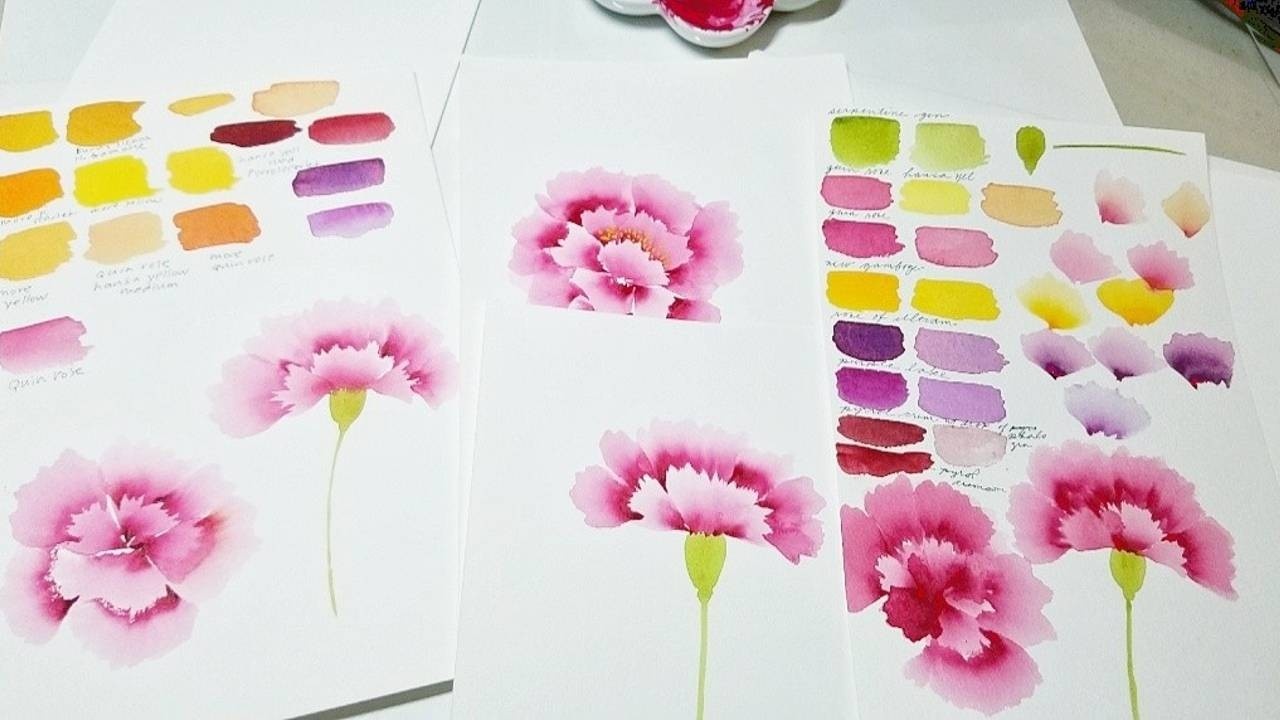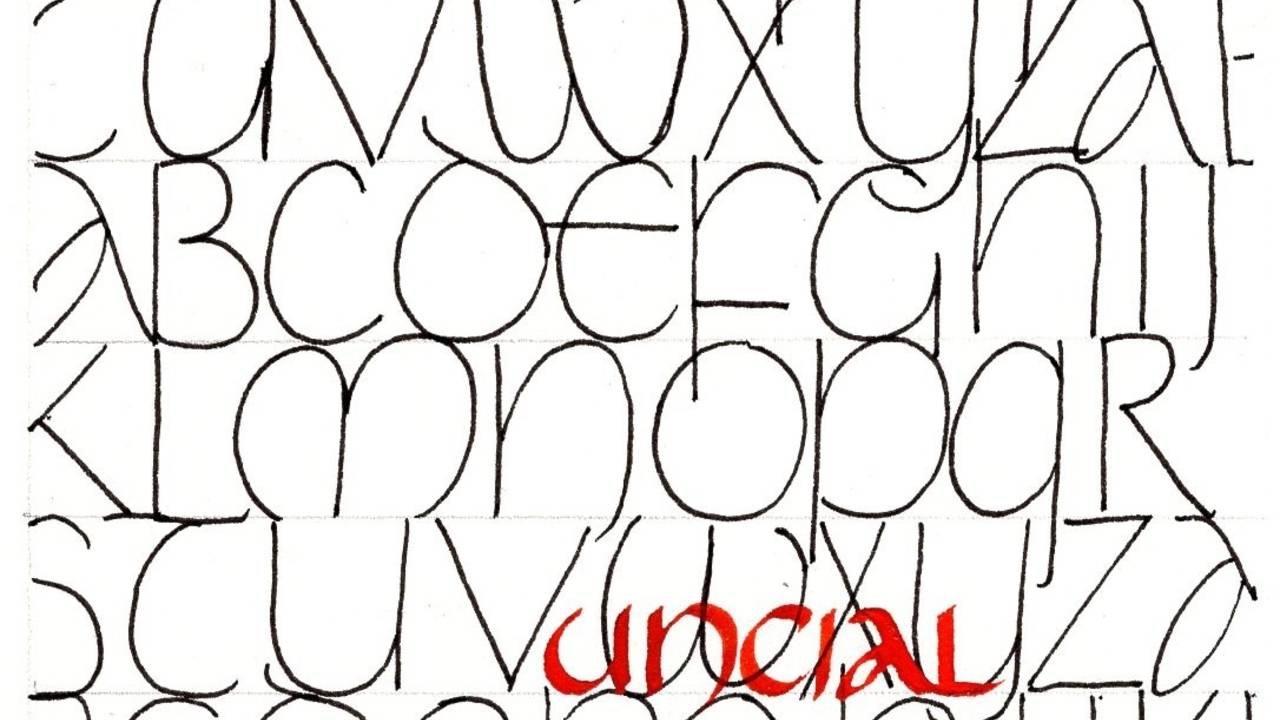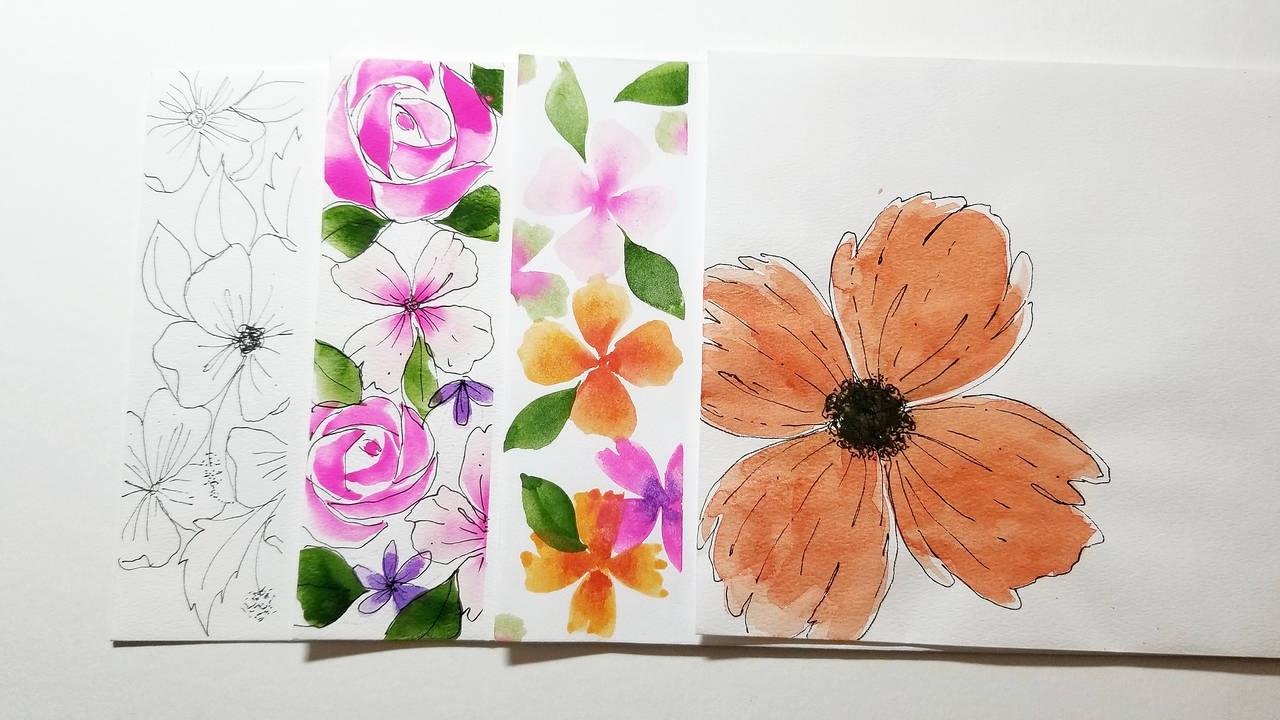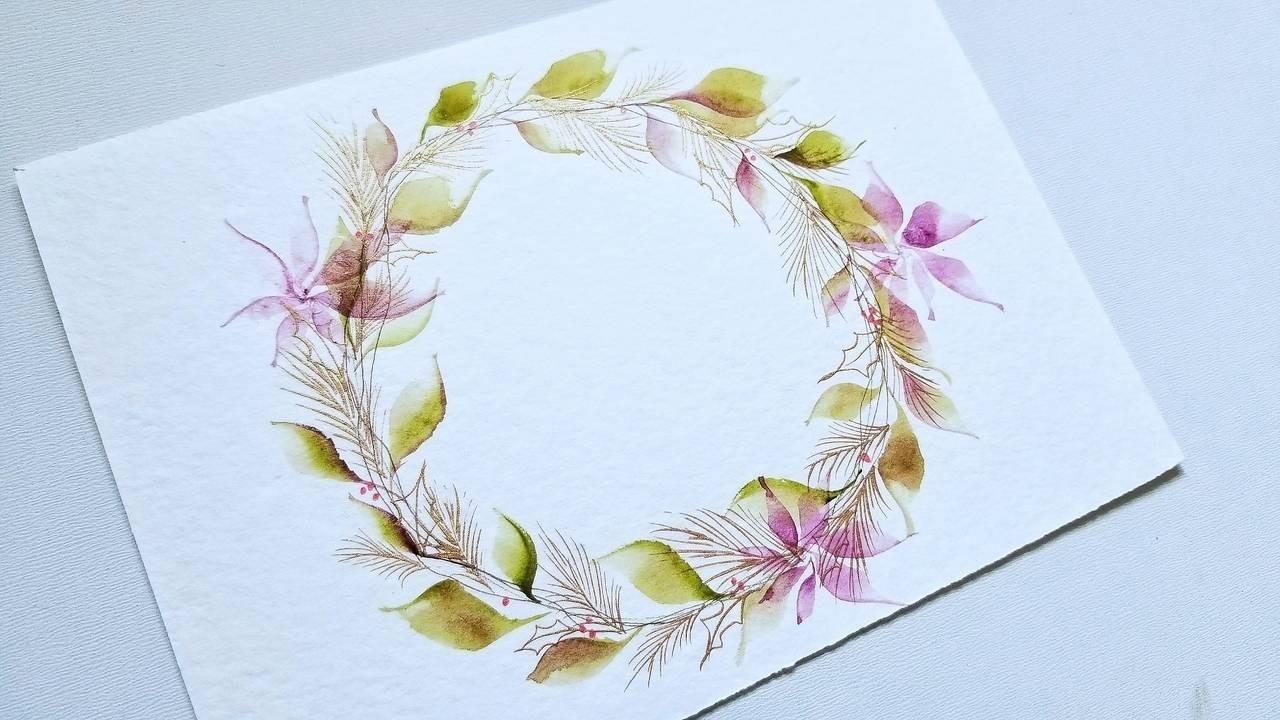Flower Shower! Watercolor Carnations

Today, we will create lovely carnations that will never wilt. You can use any color of your choice. You can use a wedge paintbrush or a paintbrush with an angled edge. A wedge paintbrush is a must-have in your collection of paintbrushes. I have some suggestions under "Watercolor" (Community) for where to get these brushes. They are often on sale so shop around!
Want to join us for class? It's offered on-demand and available now for all Tier 2 students. Some classes are also available to Tier 1 students. Click here to see the Tier 1 Class Listing.
How to Access Your Members-Only Class:
- Go to www.kallicampacademy.com
- Log in to your account
- Click on Classroom
- Click on Tier 2 -- Class Archive
- Click on Watercolor and Painting
Supplies:
Paintbrush:
- Wedge brush or Triangle brush (ex: Beste or Silver Ruby)
- Round brush (size 6 or smaller)
Paint:
- Any color that you would like your carnations to be will work (pinks and greens)
- Paint used in th...
Intro to Pointed Pen Uncial

We've done the first session of monoline uncial, and now you're ready to progress to the next step! In this session, I will introduce you to pointed pen uncial with some warmup exercises. Then, we will go through the script with a pencil, and finally we can ink up a nib!
Topics Covered
- Pointed pen uncial techniques
Want to join us for class? It's offered on-demand and available now for all Tier 2 students. Some classes are also available to Tier 1 students. Click here to see the Tier 1 Class Listing.
How to Access Your Members-Only Class:
- Go to www.kallicampacademy.com
- Log in to your account
- Click on Classroom
- Click on Tier 2 -- Class Archive
- Click on Different Calligraphy Scripts
Materials Needed
- Guidelines
- Pencil (HB or 2B)
- scrap piece of watercolor paper or scratch paper
- eraser
- Nib holder
- Nib
- Ink
- paper towel
- writing pad or stack of copy paper to write on
Homework Challenge
Want to see our students' homework? Search the hash...
Intro to Monoline Uncial Calligraphy

In session 1, you will learn Monoline Uncial using a pencil (or marker). The monoline technique is a great way to learn the basic forms of any script. It is also a fun way to change up your writing style using everyday writing tools such as a pencil or marker or fountain pen. In session 2, coming in the next rotation, I will introduce you to pointed pen uncial with some warmup exercises. Then, we will go through the script with a pencil and then ink up a nib!
Topics Covered
- How to letter with the monoline uncial script
Want to join us for class? It's offered on-demand and available now for all Tier 2 students. Some classes are also available to Tier 1 students. Click here to see the Tier 1 Class Listing.
How to Access Your Members-Only Class:
- Go to www.kallicampacademy.com
- Log in to your account
- Click on Classroom
- Click on Tier 2 -- Class Archive
- Click on Different Calligraphy Scripts
Materials Needed
- Guidelines
- Pencil (HB or 2B)
- scrap pie ...
Writing Broad Edge Neuland

Neuland is a German typeface that was designed in 1923 by Rudolf Koch. Because he designed it by directly carving it into metal, the original had a great deal of variety between sizes. I personally love this script because of how expressive it is and how easy it is to play around with it and the different forms of supplies you can use. I drew inspiration from the Neuland typeface and a few exemplars that I have studied from and created a fun way to learn Broad Edge Neuland using parallel pens. We will be staying with 0 degree and 90-degree pen angles, so those who have never tried broad edge calligraphy before will find it relatively easy to learn this script.
Want to join us for class? It's offered on-demand and available now for all Tier 2 students. Some classes are also available to Tier 1 students. Click here to see the Tier 1 Class Listing.
How to Access Your Members-Only Class:
- Go to www.kallicampacademy.com
- Log in to your account
- Click on Classroom
- Click on Tier 2
- S ...
How to Create Books with Japanese Stab Binding

Have you ever thought about learning to bind or start book binding and felt overwhelmed by not just how many types there are out there, but by the supplies required to make some of them happen? I have one for you today, that is perfect for someone who wants to try binding without having to invest in a lot of tools or time.
There are many different types and techniques of binding and book binding available. They range from being simple to complex and have various looks and functionality. Many require supplies like boards, clamps, glue, cloth, etc. on top of the basic binding supplies. The most versatile of these is Japanese Stab Binding. It is a simple binding technique that requires just a handful of supplies. You can use any type or paper and even mix/match materials. The only requirement is that the material has to be cut to the same size. No folding or gluing required!
You can use this technique to create your own calligraphy or watercolor journals, photo albums or scrapbooks, d...
Envelope Art - Floral Borders

Got mail to send? Have you thought about decorating the front (and back) of that envelope? How many times have you seen a beautifully decorated envelope and thought to yourself, "That's gorgeous!" but stopped because it either looked too difficult or time consuming? Well, envelope art can be as simple as putting some creative lettering on the front or complex with intricate flourishes and designs. This class is about finding that middle ground with floral borders that you can easily create a handful at a time and have envelopes ready to address and mail!
Topics Covered
- Examples
- Finding inspiration from what is inside the envelope
- How to decant watercolors from your pans to a palette
- A large loose floral element on one corner (front and back) and outlining it to make it pop
- Using masking tape to create a border
- How to use a wedge brush and a round brush for each floral element
- How to create a floral border with just paint and another with outlines and a last one without any p ...
How to Paint Watercolor Wreaths

Nothing says "Welcome and Merry Christmas!" than a holiday wreath hanging on a front door. Wreaths exude a sense of joy and a desire for peace, as its circular shape symbolizes unity and never ending love and life. Spring and Summer wreaths represent new life and growth. Autumn wreaths represents change and the circle of life. Christmas wreaths have deep and symbolic religious meaning, but over time, have come to represent the spirit of Christmas and the holidays. For me, leaves represent the tree of life, symbolizing health and growth, the pine needles represent peace (the Tree of Peace), the holly leaves represent hope, and the poinsettia represents good cheer. We will be combining all four elements to create a beautiful Christmas wreath, using watercolor techniques that you can use to make holiday cards and decorate envelopes.
Topics Covered:
- Creating leaves and poinsettia petals
- Creating pine needles
- Creating holly leaves
- Revisiting all four elements
- Step by step waterco...
Different Strokes: Offhand Flourishing and Cartouche

Learn how to put the fundamental strokes of off-hand flourishing and the basic elements for cartouches together to create your own feathers, off-hand flourishes, and cartouches with ease!
Topics Covered:
- Teardrop template
- 5 fundamental strokes for off-hand flourishing
- Basic elements for cartouches
- What to look for in your first cartouche
- Create a cartouche from start to finish
Want to join us for class? It's offered on-demand and available now for all Tier 2 students. Some classes are also available to Tier 1 students. Click here to see the Tier 1 Class Listing.
How to Access Your Members-Only Class:
- Go to www.kallicampacademy.com
- Log in to your account
- Click on Classroom
- Click on Tier 2 -- Class Archive
- Click on Flourishing
Materials Needed:
- a regular pencil
- a white pencil
- eraser
- straight pen holder or an oblique pen
- relatively flexible nib (ex: Leonardt Principal EF nib, Hunt 101, Gillott 303)
- ink
- a white or black sheet of paper
- c ...


